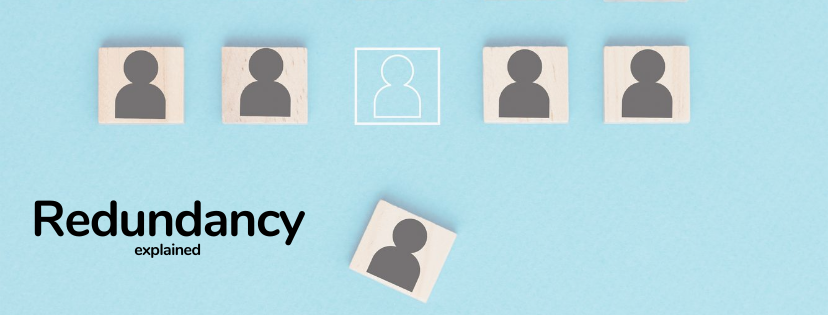Who Pays Redundancy Money? A Comprehensive Guide for Companies and Employees
Who Pays Redundancy Money? A Comprehensive Guide for Companies and Employees
Blog Article
Checking Out the Interplay In Between Business Redundancy and Organizational Flexibility for Future Development
In the dynamic landscape of today's service world, the detailed relationship between company redundancy and business flexibility arises as a crucial element for sustained development and success. Firms often encounter the difficulty of striking a fragile equilibrium between keeping a level of redundancy to mitigate threats and fostering adaptability to respond promptly to the ever-evolving market needs. This delicate interaction holds the vital to not only enduring in turbulent times but additionally growing when faced with unpredictability. As we explore the diverse measurements of this interaction, intriguing understandings into exactly how companies navigate these complexities to lead the way for future development await.
Value of Firm Redundancy
Company redundancy is a vital aspect that enhances business resilience and mitigates functional threats. By integrating redundancy actions within the business framework, firms can better withstand unexpected disturbances and fluctuations in business atmosphere. Redundancy serves as a tactical buffer, enabling companies to adapt and react efficiently to unexpected difficulties without jeopardizing essential operations.
One secret facet of the value of firm redundancy is its function in guaranteeing continuity during times of crisis. When encountered with sudden modifications or emergency situations, repetitive systems, sources, or personnel can step in to preserve vital functions and prevent prevalent interruptions. This continuity not just safeguards the business's track record and consumer trust but likewise minimizes economic losses and functional downtime.

Techniques for Business Flexibility

An additional crucial approach is buying modern technology and facilities that can support flexibility and scalability. Applying digital devices, automation, and data analytics can streamline procedures, improve performance, and give useful insights for informed decision-making. Furthermore, creating versatile organizational frameworks that enable fast changes to market characteristics and consumer needs is crucial for staying affordable in a rapidly progressing environment. By proactively recognizing potential interruptions and chances, companies can proactively adjust and thrive in an ever-changing service landscape.
Harmonizing Redundancy and Flexibility
Achieving an unified stability between operational redundancy and business flexibility is critical in browsing the intricacies of a dynamic service atmosphere. Redundancy within a business gives a safeguard, making certain connection and security in operations. Nonetheless, an excess of redundancy can result in inefficiencies and prevent flexibility to altering market problems. On the other hand, organizational flexibility permits firms to react immediately to outside interruptions and confiscate brand-new possibilities. Striking the ideal balance in between redundancy and adaptability is a delicate process that calls for a deep understanding of the organization's goals, market characteristics, and risk tolerance.
To achieve this balance, firms require to carry out normal assessments of their operations to determine locations where redundancy is needed for risk mitigation and where adaptability can drive development and growth. Executing versatile frameworks, promoting a society of constant learning and improvement, and motivating open communication throughout all levels of the organization are crucial strategies to integrate redundancy and versatility effectively. By lining up these two important components, companies can position themselves for lasting development and success in an ever-changing company landscape.
Study on Adaptation Success
In examining instances of successful business adaptation, it comes to be go to this site noticeable that the interplay in between operational redundancy and versatility is a defining variable in forming resilient businesses. A DVD rental service, Netflix showed amazing adaptability by transitioning right into a streaming platform when digitalization disrupted the sector. These case research studies highlight the relevance of functional redundancy paired with organizational versatility in promoting long-term growth and competition.
Structure Durability for Future Development
Building resilience for future growth calls for a strategic positioning of functional procedures with market characteristics and emerging trends. Firms should adjust to transforming environments by fostering a society of versatility, innovation, and continual renovation.
Additionally, fostering solid partnerships with stakeholders, such as customers, staff members, vendors, and the area, is vital for keeping and weathering unpredictabilities depend on and support during rough times. Effective interaction and openness play an essential role in building resilience, as they assist line up assumptions and assist in partnership in browsing unpredictabilities.
In addition, organizations need to prioritize understanding and growth campaigns to look at here upskill staff members and furnish them with the essential devices to adapt to transforming scenarios. By investing in their labor force, companies can boost their flexibility and agility, inevitably strengthening their durability for lasting future development.
Conclusion

In the dynamic landscape of today's service world, the complex relationship in between business redundancy and organizational versatility emerges as a vital factor for continual growth and success. Firms frequently deal with the challenge of striking a fragile equilibrium in between maintaining a degree of redundancy to reduce dangers and fostering versatility to react quickly to the ever-evolving use this link market demands.To attain this balance, business need to carry out routine analyses of their operations to identify areas where redundancy is required for threat mitigation and where flexibility can drive advancement and growth.In conclusion, the interaction in between company redundancy and business adaptability is critical for future growth. Structure strength via a combination of redundancy and flexibility will certainly make sure that business are prepared for the obstacles of the future.
Report this page